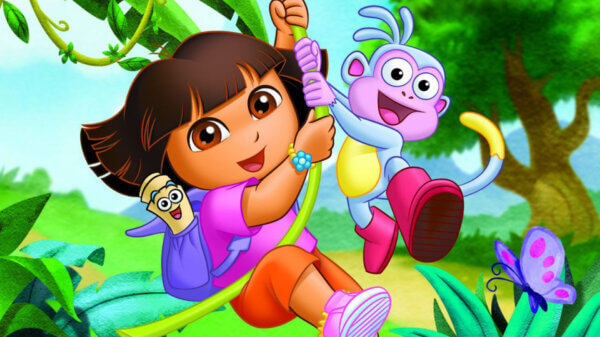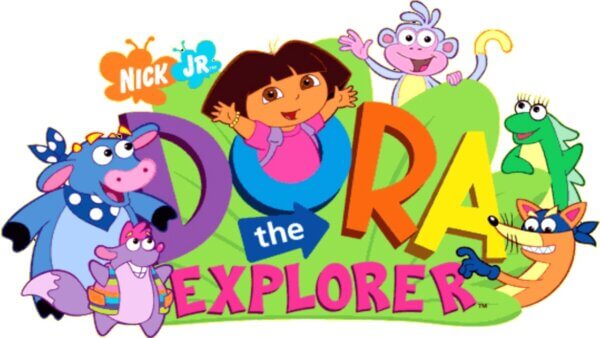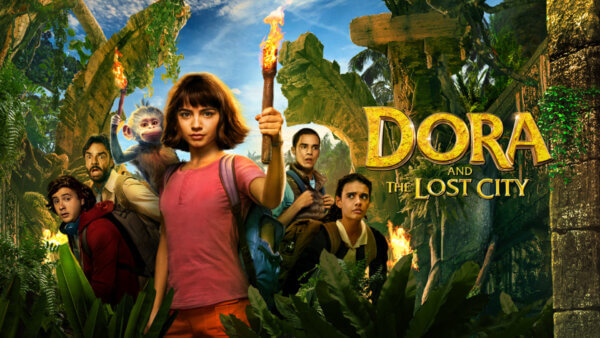Happy 20th Birthday (or Feliz Vigesimo Cumpleanos) Dora!
It was Monday the fourteenth of August in the year 2000 when children and families would be introduced to Nickelodeon’s new character who would join the company’s humorous and educational cast: a seven year old bilingual Latin girl named Dora and her companion Boots the monkey. And yet Dora has easily become one of the most recognisable characters in the world and this year marks the show’s platinum anniversary since audiences were introduced to her colourful, educational and engaging adventures.
Throughout its twenty years, the show has become one of the most distinguishable and diverse in the world while it also taught us the importance of teamwork and some Spanish too. So let’s grab our backpacks and maps as we explore the history of the animated preschool icon and meet the people responsible for her creation.
Dora the Explorer was created by Valerie Walsh, Chris Gifford and Eric Weiner and all three previously worked as producers and writers on popular live action Nickelodeon shows from the nineties, including Clarissa Explains It All and Gullah Gullah Island. They were all assigned to collaborate and create the next big hit for Nickelodeon’s preschool channel, Nick Jr, after the success of Blue’s Clues and Little Bear.
The series would go through many changes and challenges throughout its development. It started out as a live action show titled The Knock Arounds which would have starred a rabbit and featured puppets before it transitioned into animation. And with this drastic change, the rabbit transformed into a girl called Tess who would have explored the woods around her instead of her previous incarnation.
But The Knock Arounds went through its most important change yet after the creative head of Nickelodeon at the time, Brown Johnson, attended a conference and received some shocking results. Out of eighty prime time characters aimed at children, not one of them were of Latinx descent.
When Johnson returned to Nickelodeon, she requested that Tess would change her ethnicity and represent the Latinx people and culture. The creators brought on some new talented people involved to help with the change and as well as bringing on consultants of Latin knowledge, they also hired Helena Giersz as the animation designer. With the combined efforts of these new staff members, they were able to use their experiences to transform Tess into Dora and gave her mestizo features to make her appeal to all diverse Latin cultures rather than designed for one specific group. With a new star and new tweaks and additions along the way, The Knock Arounds became Dora the Explorer!
When the series was completed and finally aired on Nick Jr in August of 2000, it became one of the biggest commercial hits for both Nickelodeon and the pre-school market and what followed became a whirlwind of hype that not many animated characters would have gained years after their initial release.
She won multiple high profile awards within the animation and children’s media industries from The Peabody Award to a Daytime Emmy. Two spin off titles were created: Go Diego Go featured her cousin Diego, who teaches the audience about different animals while rescuing them; and Dora and Friends: Into the City! followed an older Dora (which was initially controversial for some) going on adventures with her friends. There was even a live action Hollywood feature film released last year titled Dora and the Lost City of Gold that starred a leading cast of famed Latinx actors including Michael Pena, Eva Longoria, Benicio del Toro and Danny Trejo.
And with a broadcast of over one hundred and fifty countries across the original series’ first ten years alone, her fame and recognition couldn’t be rivalled.
But arguably one of the reasons she initially became a huge success comes down to her representation of the Latin community at a time when there were not a lot of children’s television shows that represented a wide range of diverse groups of characters. And while there have been new characters and shows introduced over the years that have also celebrated the same culture and people, they haven’t quite grabbed the same attention that Dora has been able to do with her engaging and friendly format that has remained the same while technology and animation quality over the years did.
Whether you grew up with the show or your children discovered the recent episodes, there’s no denying that she has impacted character inclusivity, acceptance and positivity for children’s television. Feliz 20th aniversario Dora the Explorer!




